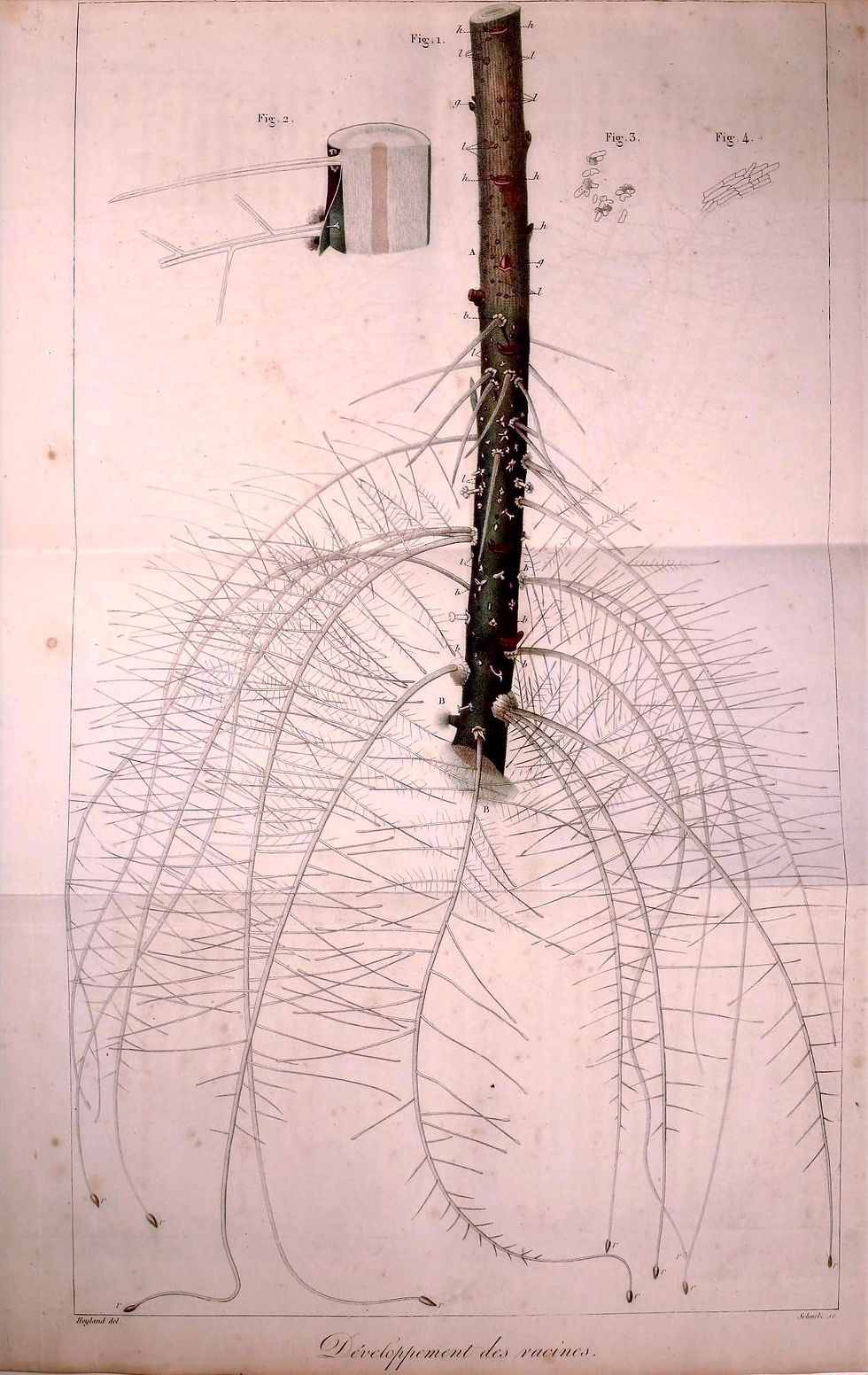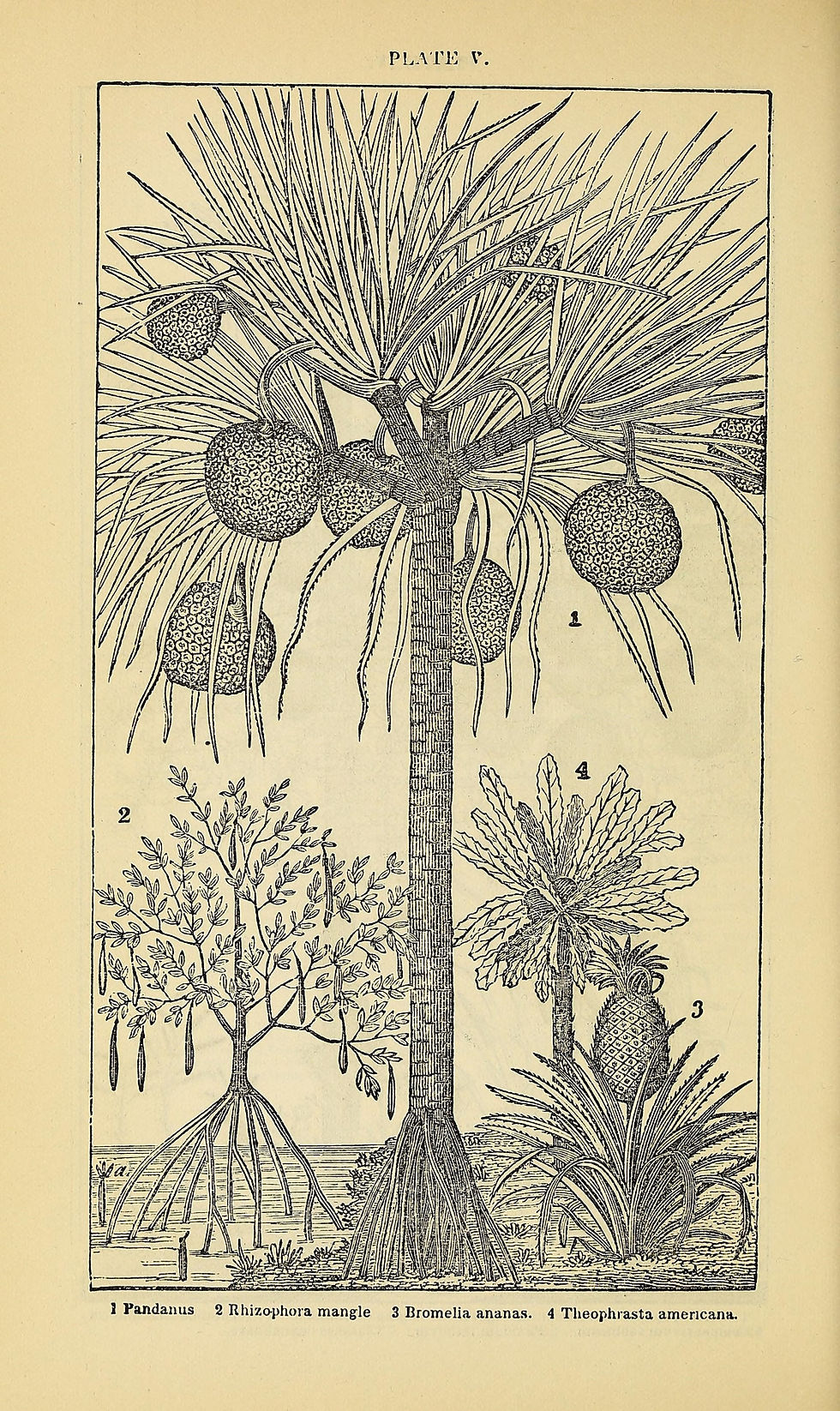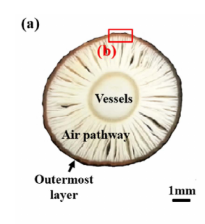The omnivorous weed that hides among the leaves | Dungeons & Dragons

The Shambling Mound is a master of masquerading and mulching. This big mass of organic matter is one tank of a creature, standing at a large size with resistances to cold and fire. The creature engulfs its prey, dealing repeated bludgeoning damage as it suffocates its targets, and adding them to its cloak of plant and animal matter. Shambling Mounds aren't pursuit creatures, instead relying ambushing and self-preservation through its ability to feign death when bested.
However, some elements of this mess of matter set it apart from other fantasy flora.
Let's take a look:
• The Shambling Mound needs water, air, and nutrients from the soil in order to survive in swamplands, marshes, and rainforest environments
• The plant is an omnivore and can only receive nutrients after it undergoes mechanical digestion
• It has a central root stem that acts as essentially one big spinal cord with a peripheral root network
• The Shambling Mound is invigorated by lightning, healing itself and increasing its appetite
Water, Air, Nutrients
The Shambling Mound is stated to be a regular plant that was brought to life a la Frankenstein via lightning. Since we know it was just a normal plant way back when, we can cross off the Shambling Mound as being some kind of parasite that infects an already living plant. It's also for sure not in the mushroom family. To be in the mushroom family, it would need to produce mycelium instead of roots, and we definitely know it has roots.
That's great and all, but something's definitely missing right? Yeah, sunlight! The Shambling Mound doesn't seem to rely on sunlight – only water, air, and nutrients from the soil. So, that means the Shambling Mound, through its transformation, has removed its ability to photosynthesize. That'd also mean that the Shambling Mound no longer needs to produce exterior leafage to undergo photosynthesis.
It's Omnivorous and Hungry
It's funny, the immediate thought when it comes to plants that fight back is carnivorous plants. However, despite the plant's omnivorous nature, it does not use acid to break down and eventually feed off its opponents. We know this because its ensnared prey takes bludgeoning damage, which would equate to mechanical digestion. Mechanical digestion is what humans do when they chew things with their teeth, for example.
However, the creature functions the same as any non carnivorous plant. It does not execute the most important motion of carnivorous plants: chemical digestion. The Shambling Mound exclusively receives nutrients through the soil and compost it cloaks itself with. Furthermore, the Monster Manual seems to imply that the plant does not receive additional benefits from eating animals.
The Stem is the Spine
The Shambling Mound has a central root stem with several peripheral roots branching off of it. The peripheral roots provide the structure for its cloak of organic matter to adhere to, while the central root stem is the command center. It's able to self-preserve, understand what information it receives about its surroundings, and dictate the rest of the plant's movements. It functions similarly to a human's central and peripheral nervous system.

Destroying the central root stem is what destroys the plant for good. The Shambling Mound has to have several many of these peripheral roots to engulf prey and grind down organic material. Something about being constricted and beat up by these roots seems much, much worse than being beat up by wet plant matter.
It's ALIVE, IT'S ALIVE
A regular ol' plant got turned into this monstrosity. RIP.
Anyways, the Shambling Mound feels invigorated by lightning, healing itself and increasing its growing hunger. Now, that definitely seems fantastical, but I propose that the reason for this involves the central root stem intaking essentially an espresso shot of nutrients.
Alright, so we have a basis for elaborating on this monstrosity, but let's see how life science backs this up. Time to make some educated guesses!
If It's Not Photosynthesis, Then What is It?
The Monster Manual makes no explicit notes about the plant producing its own foliage. The Shambling Mound also does not seem to sap the life out of the plants it collects. It doesn't drink blood, chemically digest like a carnivorous plant, or latch on to an existing, healthy plant. So the question is, if the Shambling Mound doesn't photosynthesize, how does it produce energy?
Photosynthesis is the process that photo-autotrophic plants undergo to absorb light energy and convert carbon dioxide into glucose and water into oxygen. Well, presumably, the Shambling Mound does not need to photosynthesize in order to respirate and create adenosine triphosphate (ATP). The energy made during photosynthesis is stored in ATP molecules. So, knowing that the plant does not need to photosynthesize, means that when lightning struck the ordinary plant, it gained the ability to produce its own energy without sunlight.

Well, if it's not a photo-autotroph, would that make it a heterotroph? Technically, yeah, but I'd say it's somewhere between that and an autotroph (in its most general form). A heterotroph is anything that doesn't produce its own food, instead eating sources of carbon: plants, animal matter, etc. Yeah, the Shambling Mound is an omnivore that does consume animals, like a heterotroph, but its manner of consumption mirrors autotrophs.
Lore wise, this is in line with it being brought to life – it lost the thing that made it a true plant. Given that it does not produce its own leaves, it does not need chloroplasts to convert sunlight into energy. It might not have chloroplasts at all.
The plant gets its green coloring from two factors: the fact that it's picking up fresh, chlorophyll-ed plants, and building up camouflage to match the environment it's in. Remember, the Shambling Mound is just this naked root that picks up stuff.
Mmm, Mulch and Compost
It's important to note that the Shambling Mound is not a fast creature, and it doesn't need to be in a constant state of motion to feed.
That being said, let's talk ecology.
Shambling Mounds aren't found in beautiful meadows full of flowers and sunshine. They're found in swamps, bogs, and rainforests. All of these environments are acidic, at around an average of pH 4.5 for all three locations. Acidic soil is lower in nutrients, and all three locations are prone to fluctuation in soil pH due to rain, groundwater, the presence of other things in the soil (such as clay) and humidity.
Ok, they live in difficult terrain. But, they have to live somehow, especially since the pH of plant roots are more acidic than neutral and optimal soil pH is like pH 6.5 to 7.5.
By mulching its prey, it allows existing soil to better retain phosphorus, calcium, potassium, and magnesium, essential minerals for plant growth. Since the creature is so slow and wet, when it moves, it'd leave behind a trail of suitable compost, benefitting both the plant and the soil. That would also improve soil quality for the plants fortunate enough to have not been picked up by the plant, which creates richer plants for later consumption.
If the plant needs to constantly create mulch in an environment that is constantly fluctuating with acidity levels, it would make sense for the plant to thrive better in neutral to alkaline soil. An article by planetnatural.com says "Compost can help prevent pollution in at least two ways, by preventing run-off and by retaining nutrients. Interestingly, both are made possible by the same attribute in compost: its ability to provide attachment sites for nutrients." The mulch and compost left behind by the Shambling Mound helps retain soil quality should the pH of its be less than ideal.
The Central Root Stem and Its Root-lings
The Shambling Mound has a primary root-stem that's responsible for giving commands to its network of several branching roots that create "appendages" for the plant to move. I've referred to the branching roots as its "peripheral roots," as they seem to function similarly to the peripheral nerves in the human body. Peripheral nerves are found throughout the human body, taking in information from the senses and sending it to the brain. The plant does not have tremorsense, but can still take in information about its surroundings. If it had roots acting similarly to a peripheral nervous system, it could perceive things without eyes.
The creature is made up of vascular roots, since it needs water to live. However, due to the fact that the plant relies on soil and clean water for sustenance, and it lives in a difficult environment, I propose that the Shambling Mound's roots are similar in structure to a mangrove plant's stilt roots. Mangrove plants thrive in environments with high salt contents and mud. They also grow in sediment heavy areas and where fresh and salt water mix. Also, look at it. It looks like it could get up and start walking the minute I'm not looking directly at it.

A brilliant report titled "Novel water filtration of saline water in the outermost layer of mangrove roots" provides a cross-section of the mangrove plant's vascular root system. This root has a hydrophobic, macro-porous membrane. Now that's a mouthful, but let's break it down:
Hydrophobic: The membrane, although spongey in texture, does not retain water like a kitchen sponge. Water beads off of it to be used by the plant.
Macro-Porous Membrane: The pores of the membrane are large, allowing for water to enter the plant quickly.
Okay, great, let's talk negative pressure.
When plants release water vapor into the atmosphere, they're able to pull water from the soil into their roots in a process called "negative pressure." The aforementioned report says, "Among various biophysical phenomena in mangrove roots, air gap [within their roots] is assumed to be used for filtering solutes. When negative pressure is applied to nanoporous structures with hydrophobic surfaces, solutes are rejected from passing through the surface, whereas only water is filtered through evaporation, transmission, and condensation processes."

Not only that, the gaps in the mangrove's membranes are offset, allowing for a cleaner filtration as solutes have to travel through several uneven layers, eventually leaving clean water behind.
Great, that makes sense with our Shambling Mound! In an environment that's prone to being less than ideal, the Shambling Mound can effectively pull up fresh water from the soil, leaving behind all of the nonessential stuff.
Thunderbolts and Lightning
In a blog post by the University of Melbourne, they state that running electrically charged copper wiring near plants, "...accelerates the transportation of some naturally charged particles such as calcium ions and bicarbonates, which boost the metabolism process of the plant."
That sounds familiar! If that's why it gets hungry when met with lightning, what about healing?
Well, I propose two ideas:
1). If we make an educated guess that the Shambling Mound and a mangrove plant have similar root structures, and use a little bit of fantasy, we can infer that when lightning strikes the Shambling Mound, the peripheral roots receive a rush of stimulation. Since the plant has been brought to life like Frankenstein, the macro-porous membrane could undergo an isotonic concentric contraction (when your bicep muscle gets shorter when you lift weights). This opens up a shorter path to the central root stem. So, when hit by lightning, the plant could take one big gulp of water and nutrients from its roots and deliver it right to the central root stem, healing the plant on the spot.
OR
2). As lightning travels through the air, it would split the nitrogen currently present in the atmosphere. Plants usually cannot process nitrogen, but with the introduction of lightning, the nitrogen binds to the oxygen present in the atmosphere in a process called "nitrogen fixation by lightning." When nitrogen oxides come in contact with a Shambling Mound that is dripping wet, the plant would absorb the resulting nitrates through its roots and be healed. Nitrates are a mega, ultra fertilizer for plants. In real life, nitrogen fixation by lightning needs to be accompanied by rain, but again, if we use a little fantasy, the fact that the plant is constantly wet could be enough for it to heal.
So You've Just Beat a Shambling Mound, What Can You Do With It?
First of all, good job! Knowing what we know about the Shambling Mound, let's find uses for it:
• The central root-stem has a macro-porous membrane that filters fresh water. If you're in a campaign that relies on food and drink, you've got yourself a water filtration system. Slice the root into discs, and they're pretty much coffee filters
• Due to the plant thriving off of alkaline compost, the plant itself could have a higher pH, so if you were, say, hit with acid damage, the plant could be powdered and applied to the user to end the effect of recurring acid damage (Tasha's Caustic Brew). Remember, acidic + basic = neutral
• If you ended up ingesting something acidic and you're taking repeated damage, the plant could be powdered to neutralize it. However, since you're eating it, make a Con Save for constipation (it's fiber, come on)
• You could make a Potion of Maximum Power, if the root-stem has been electrified before use or during the alchemical process
• Potion of Resist Fire and Cold, for obvious reasons
• Potion of Healing, at the cost of an increased appetite. You could also do this where the person drinks the potion and there's no other effects until they're hit by lightning or Fey magic. What "appetite" means is up to you though: could be hunger, could be bloodlust, could be the need to eat a salad
• According to The National Library of Medicine, Mangrove bark has antibacterial properties and according to the Living Oceans Foundation, it's also mosquito repellant. Something similar can be done with the central root stem
• The Shambling Mound covers itself in junk, I'm sure there's something in its mess
• This thing's roots are so sturdy, you could probably create a crutch or splint
The Shambling Mound: Final Thoughts
To me, this creature just got scarier and more practical at the same time. This slow moving creature relies on livable soil and water to maintain itself, and gets stronger when fed a little too much voltage. By using some real life science, it's interesting to think about how the Shambling Mound is both invasive and symbiotic with its environment. It exists in a weird space between creature and plant, but all of its quirks ended up mirroring actual plant behaviors. Victor Frankenstein would be proud.


Comments